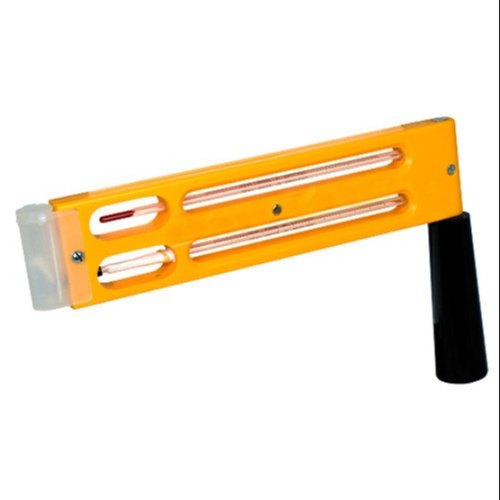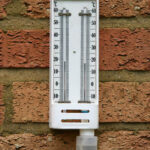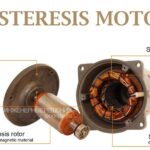Any instrument capable of measuring the psychrometric state of air is called a psychrometer. As mentioned before, in order to measure the psychrometric state of air, it is required to measure three independent parameters. Generally two of these are the barometric pressure and air dry-bulb temperature as they can be measured easily and with good accuracy.
Two types of psychrometers are commonly used. Each comprises of two thermometers with the bulb of one covered by a moist wick. The two sensing bulbs are separated and shaded from each other so that the radiation heat transfer between them becomes negligible. Radiation shields may have to be used over the bulbs if the surrounding temperatures are considerably different from the air temperature.
The sling psychrometer is widely used for measurements involving room air or other applications where the air velocity inside the room is small. The sling psychrometer consists of two thermometers mounted side by side and fitted in a frame with a handle for whirling the device through air. The required air circulation (≈ 3 to 5 m/s) over the sensing bulbs is obtained by whirling the psychrometer (≈ 300 RPM). Readings are taken when both the thermometers show steady-state readings.
In the aspirated psychrometer, the thermometers remain stationary, and a small fan, blower or syringe moves the air across the thermometer bulbs.
The function of the wick on the wet-bulb thermometer is to provide a thin film of water on the sensing bulb. To prevent errors, there should be a continuous film of water on the wick. The wicks made of cotton or cloth should be replaced frequently, and only distilled water should be used for wetting it. The wick should extend beyond the bulb by 1 or 2 cms to minimize the heat conduction effects along the stem.
Other types of psychrometric instruments:
1. Dunmore Electric Hygrometer
2. DPT meter
3. Hygrometer (Using horse’s or human hair)


